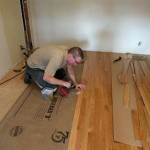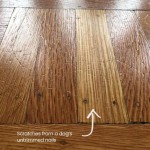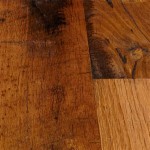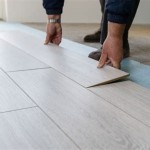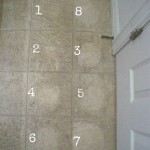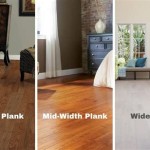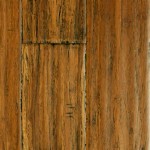Loose Lay Vinyl Flooring: A Comprehensive Guide
Loose lay vinyl flooring has emerged as a popular alternative to traditional flooring options, offering a combination of aesthetic appeal, durability, and ease of installation. This flooring type distinguishes itself from other vinyl options through its unique installation method, relying primarily on its weight and a high-friction backing material to stay in place, rather than adhesives or locking mechanisms.
This lack of adhesive makes loose lay vinyl a particularly attractive choice for homeowners and businesses seeking a quick and relatively mess-free flooring solution. While it shares many of the benefits of standard vinyl flooring, such as water resistance and ease of maintenance, the loose lay installation presents a unique set of advantages and considerations that are important to understand before making a purchase.
This article provides a comprehensive overview of loose lay vinyl flooring, covering its composition, advantages, disadvantages, installation process, maintenance requirements, and suitability for various spaces. It aims to equip readers with the necessary knowledge to make informed decisions about whether loose lay vinyl is the right flooring choice for their needs.
Understanding the Composition of Loose Lay Vinyl
Loose lay vinyl flooring, like other vinyl flooring types, is typically constructed in multiple layers. These layers work together to provide the flooring's overall performance characteristics, including its durability, water resistance, and aesthetic appeal.
The base layer, often referred to as the backing, is a critical component of loose lay vinyl. It's designed to provide high friction and grip against the subfloor. This specialized backing, often made of a reinforced fiberglass or rubberized material, is essential for preventing the planks or tiles from shifting and moving underfoot. The weight of the flooring material itself also contributes significantly to its stability.
Above the backing is the core layer, which provides the structural integrity of the flooring. This layer often consists of multiple layers of vinyl, sometimes incorporating fiberglass for added strength and dimensional stability. A thicker core layer generally indicates a more durable and resilient product.
The decorative layer is responsible for the flooring's visual appearance. This layer is a printed image of wood, stone, tile, or other patterns. High-quality loose lay vinyl utilizes advanced printing technology to create realistic and visually appealing designs.
Finally, the wear layer is the topmost layer, protecting the decorative layer from scratches, scuffs, and stains. This layer is typically made of a clear, durable vinyl coating. The thickness of the wear layer is a crucial factor in determining the flooring's overall durability and resistance to wear and tear. A thicker wear layer offers better protection and is more suitable for high-traffic areas.
Advantages of Choosing Loose Lay Vinyl Flooring
Loose lay vinyl flooring presents a number of compelling advantages that make it a popular choice for various applications. These benefits stem primarily from its unique installation method and the inherent properties of vinyl material.
One of the primary advantages is ease of installation. Unlike traditional vinyl flooring options that require adhesives or intricate locking systems, loose lay vinyl is designed to be installed quickly and easily. The installation process typically involves simply laying the planks or tiles directly onto the subfloor. This ease of installation significantly reduces labor costs and allows for DIY installation, saving on professional installation fees.
Another significant benefit is the ease of replacement and repair. If a plank or tile becomes damaged, it can be easily removed and replaced without disturbing the surrounding flooring. This makes maintenance and repairs much simpler and less costly compared to glued-down or interlocking flooring systems.
Loose lay vinyl also offers excellent water resistance. Vinyl is inherently resistant to water damage, making it a suitable choice for areas prone to moisture, such as bathrooms, kitchens, and basements. This water resistance also makes it easy to clean and maintain, as spills and messes can be easily wiped away.
Furthermore, loose lay vinyl provides a comfortable underfoot feel. The thickness and construction of the flooring material often provide a degree of cushioning, making it more comfortable to walk on compared to hard surfaces like tile or concrete. This can be particularly beneficial in areas where people spend a lot of time standing.
Acoustic properties are another advantage. Loose lay vinyl can help to dampen sound transmission, making it a quieter flooring option compared to some harder surfaces. This noise reduction can be particularly beneficial in multi-story buildings or apartments.
Disadvantages and Considerations for Loose Lay Vinyl
While loose lay vinyl offers numerous advantages, it's crucial to consider its potential drawbacks before making a flooring decision. Understanding these limitations will help ensure that loose lay vinyl is the right choice for the specific application.
One key consideration is subfloor preparation. While loose lay vinyl is more forgiving than some other flooring types, proper subfloor preparation is still essential for optimal performance. The subfloor must be level, clean, and free of debris to prevent the flooring from shifting or becoming damaged. Unevenness in the subfloor can lead to instability and potential issues with the flooring's appearance and longevity.
Another potential concern is the possibility of movement. While the high-friction backing is designed to prevent movement, loose lay vinyl can still shift under heavy traffic or in areas with significant temperature fluctuations. This risk can be mitigated by using double-sided tape along the perimeter of the room or in areas prone to movement.
The cost of loose lay vinyl can be higher than some other vinyl flooring options. The specialized backing and construction of loose lay vinyl often contribute to a higher price point compared to standard glue-down or click-lock vinyl planks. However, the reduced installation costs can offset this difference in some cases.
Appearance can also be a factor. While loose lay vinyl is available in a wide range of styles and patterns, the visual appearance may not be identical to natural wood or stone. Some individuals may prefer the more authentic look of natural materials, although advancements in printing technology are continually improving the realism of vinyl flooring.
Finally, the suitability for certain spaces should be considered. Loose lay vinyl may not be the best choice for areas with extremely heavy traffic or where rolling loads are common, as the flooring may be more susceptible to movement in these situations. In such cases, a glued-down or interlocking flooring system may be a more appropriate option.
Installation Process for Loose Lay Vinyl
The installation process for loose lay vinyl is generally straightforward, contributing to its popularity as a DIY-friendly flooring option. However, careful attention to detail and proper preparation are essential for achieving a successful and long-lasting installation.
The first step is subfloor preparation. The subfloor must be thoroughly cleaned, removing any dirt, dust, debris, or existing flooring materials. Any unevenness or imperfections in the subfloor should be addressed with a leveling compound to create a smooth and even surface. This is crucial for preventing movement and ensuring the flooring lies flat.
Acclimation is an important step that is often overlooked. The loose lay vinyl planks or tiles should be acclimated to the room's temperature for at least 24 to 48 hours before installation. This allows the material to expand or contract to its natural size, minimizing the risk of gaps or buckling after installation.
Next, begin laying the planks or tiles. Start in a corner of the room and work your way across, ensuring that each piece is aligned properly. Most loose lay vinyl products are designed to be installed without adhesives, relying solely on their weight and high-friction backing to stay in place. However, in larger rooms or areas prone to movement, double-sided tape can be used along the perimeter of the room or in strategic locations to provide additional stability.
Cutting the planks or tiles to fit around walls, corners, and other obstacles may be necessary. A utility knife or specialized vinyl flooring cutter can be used for this purpose. It's important to measure accurately and make clean, precise cuts for a professional-looking finish.
Once the flooring is installed, inspect it carefully for any gaps, misalignments, or other imperfections. Address any issues promptly to ensure a smooth and even surface. Finally, clean the flooring with a damp mop to remove any dust or debris from the installation process.
Maintenance and Care of Loose Lay Vinyl Flooring
Maintaining loose lay vinyl flooring is relatively simple, contributing to its appeal as a low-maintenance flooring option. Regular cleaning and proper care can help to extend the life of the flooring and keep it looking its best.
Regular sweeping or vacuuming is essential for removing dirt, dust, and debris that can scratch or dull the surface of the flooring. Use a soft-bristled broom or a vacuum cleaner with a floor brush attachment to avoid damaging the vinyl.
For deeper cleaning, damp mopping with a mild detergent is recommended. Avoid using harsh chemicals, abrasive cleaners, or scouring pads, as these can damage the wear layer of the flooring. A pH-neutral cleaner specifically designed for vinyl flooring is the best choice.
Spills should be cleaned up promptly to prevent staining. Use a clean, damp cloth to wipe away spills as soon as they occur. For stubborn stains, a mild solution of baking soda and water can be used.
Protect the flooring from heavy furniture by using furniture pads or coasters under the legs of chairs, tables, and other heavy items. This will help to prevent dents and scratches. Avoid dragging heavy objects across the floor.
While loose lay vinyl is water-resistant, it's still important to avoid excessive moisture. Wipe up any standing water promptly and ensure that areas prone to moisture, such as bathrooms and kitchens, are well-ventilated.
Periodic waxing or polishing may be necessary to maintain the shine and luster of the flooring. However, not all loose lay vinyl products require waxing, so it's important to consult the manufacturer's recommendations before applying any finishing products.
By following these simple maintenance tips, loose lay vinyl flooring can provide years of durable and attractive performance.

What Is Loose Lay Vinyl Flooring A Plank Guide Reallyfloors America S Est Hardwood
Loose Lay Vinyl Plank Flooring Pros Cons Floorings

What Is Loose Lay Vinyl Flooring How To Install Id

How To Lay The Perfect Loose Vinyl Plank Flooring Tile Wizards

What Is Waterproof Loose Lay Vinyl Plank Flooring

What Are The Advantages Of Loose Lay Vinyl Plank Impression Floors Jpg

Loose Lay Vinyl Flooring Builtory

Looselay Luxury Vinyl Best Flooring

What Is Loose Lay Vinyl Flooring
:strip_icc()/SCF_158_04-f22c17fc1b0e4ac68b16996497758c81.jpg?strip=all)
How To Install Vinyl Sheet Flooring That S Loose Lay In Hours
Related Posts

